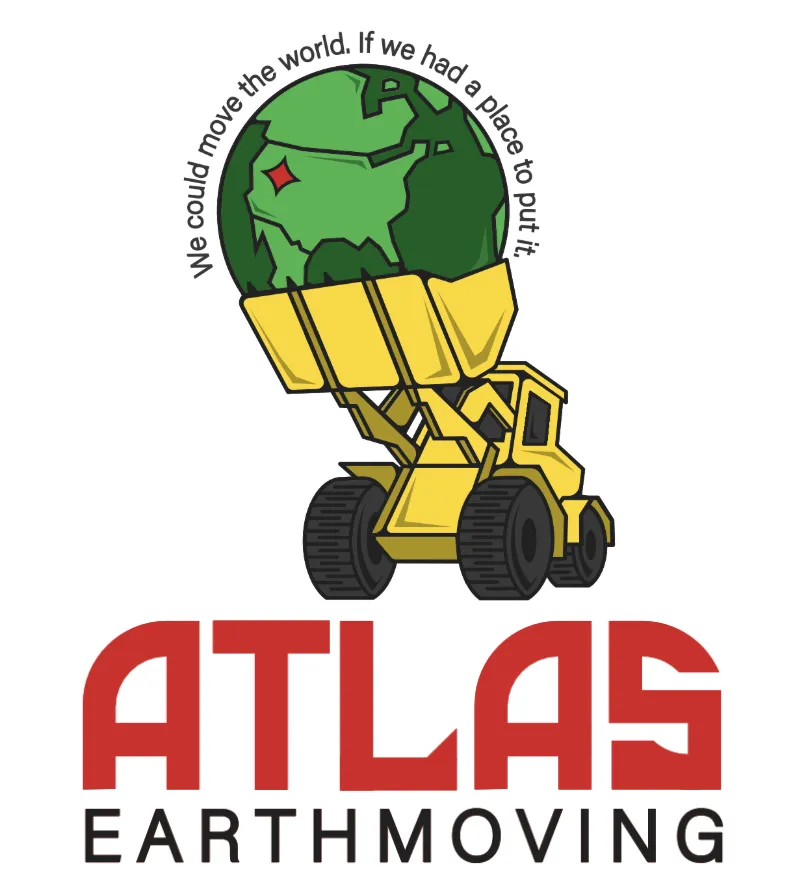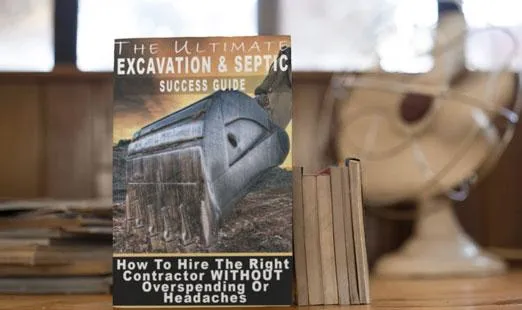
Serving Idaho Counties: Ada, Elmore, Boise, Gem and Owyhee
French Drains near Ada County, Idaho
Atlas Earth Moving is Committed to superior quality and results!

AVOID COSTLY MISTAKES:
Do NOT hire an excavating contractor without first reading our free guide:
The ULTIMATE Excavation & Septic "Success Guide."

French Drains near Ada County—What They Are and Why They Work
Tired of puddles, shifting mulch, or water creeping toward your basement? In Ada County, Idaho, clay soils and quick thaws often force water sideways instead of down. A French drain fixes this by channeling water through a sloped trench with a perforated pipe wrapped in fabric and gravel. It redirects excess water from soggy areas to a safe outlet—like daylight, a dry well, or storm drain—reducing pressure around your foundation and keeping your yard dry after storms or rapid snowmelt.
How Can We Help?


The Top Benefits of French Drains near Ada County, Idaho
A well-planned French drain provides multiple wins at once. It protects foundations by relieving the pressure that forces moisture through cracks and cold joints. It recovers lawn usability, turning muddy, mosquito-friendly zones into firm, mowable turf. It stabilizes patios, paver walks, and driveways by keeping the base layer dry so materials do not heave, settle, or lose joint sand. It improves plant health by preventing root suffocation in constantly saturated beds. It reduces frustrating cleanup after storms by keeping mulch and gravel from migrating downhill.
It can also help manage seasonal snowmelt by offering an outlet when frozen ground begins to thaw unevenly. Because the system is buried and unobtrusive, it preserves curb appeal while quietly doing its job. The result: less mess, fewer maintenance headaches, and a property that handles Idaho’s weather with confidence.
The Benefits of Hiring a Pro for French Drains near Ada County
Drainage looks simple until small mistakes multiply. Local pros bring design insight, material quality, and disciplined installation. First, design: professionals map grades with a level or laser, verify soil texture, study how downspouts, irrigation, and neighboring lots affect your yard, and then size pipe, select the right fabric, and choose outlet locations that actually work in Idaho seasons. Second, materials: they specify washed angular rock with real void space, durable perforated pipe suited to depth and load, and geotextiles that let water through while trapping fines. Third, execution: crews maintain consistent slope, protect roots and utilities, compact backfill appropriately, and restore surfaces cleanly. The difference shows up in performance. A pro-installed system flows freely, resists clogging, and holds grade over time. That means fewer callbacks, fewer surprises, and a solution that stays effective long after the first big storm.
Where French Drains near Ada County Make the Biggest Impact
Different problems call for tailored layouts. Along foundations, deeper drains pair well with waterproofing to curb seepage and musty odors. In side yards that behave like flumes during cloudbursts, a shallow line with catch basins intercepts sheet flow before it reaches patios or gates. Beneath driveways and paver patios, a linear drain preserves base dryness and prevents frost-related movement. In planting beds against fences, compact lines keep mulch in place and prevent runoff into neighboring yards. On sloped properties, stepped sections manage elevation changes while maintaining a consistent pitch. Around downspout splash zones, tie-ins move roof runoff underground instead of across lawn surfaces. Each location has nuances of depth, fabric, rock size, and outlet style; the right combination keeps water moving without undermining structures, landscaping, or property lines.
What to Look for in French Drains near Ada County Bids
Make apples-to-apples comparisons. Ask bidders to specify trench width and depth, pipe diameter and material, fabric type, aggregate size and volume, number of cleanouts, discharge details, any surface inlets, and the restoration plan. Request clarity on rainy-weather procedures, protection for hardscapes and plantings, and exactly what triggers a change order. Transparent line items let you compare proposals fairly and budget with confidence.
See Our Excavation & Septic Services

✔️ Residential Excavation
✔️ Swimming pool excavation
✔️ Basement excavation
✔️Residential Sewer And Water Replacement
✔️Residential Septic Installation And Repair
✔️Concrete Preparation
✔️Small Commercial Site-Work
✔️Residential Gravel And Sight Work
✔️ Demolition
✔️ Large pond Construction
✔️ Small Pond Construction
✔️ Dozer work
✔️ Septic inspections
✔️ Trenching
✔️ Utilities Trenching
✔️ Foundation Repairs
Quality Services Launched FAST!

✔️ Septic system pumping
✔️ Septic installs traditional systems
✔️ Septic tanks - aerobic systems
✔️ Septic tanks - Plastic/poly
✔️ Septic tanks - Concrete
✔️ Drain field replacement
✔️ Grading, lot clearing
✔️ French Drains
✔️ Retaining walls
✔️ Sewer repairs
✔️ Drainage systems
✔️ Full site preparation
What Are You Waiting For?
The Process for Hiring French Drains near Ada County, Idaho
Step 1: Discovery and site visit. Share symptoms—standing water, musty basement smells, puddles after irrigation—and your timeline. The contractor confirms slopes with a level or laser, checks downspout locations, notes soil conditions, and identifies lawful discharge points.
Step 2: Plan and estimate. Expect a diagram or written scope showing trench routes, depths, pipe type, fabric, aggregate specification, cleanouts, surface inlets, and outlet strategy. The estimate should clarify mobilization, utility locates, protection of existing features, restoration, and options like downspout tie-ins, dry wells, channel drains, or sump pumps.
Step 3: Utility locates and permitting. Idaho law requires locating underground lines before digging. If the outlet connects to a municipal system or crosses a right-of-way, permits may apply; professionals handle the paperwork.
Step 4: Installation. Crews strip sod, cut a clean trench, maintain slope, place fabric, set pipe with correct orientation, add washed rock, and fold fabric to create a silt-resistant “burrito.” They top with soil or decorative gravel and restore turf or mulch.
Step 5: Testing and handoff. The line is flushed to confirm flow, and you receive maintenance notes plus a simple map for future reference.
Materials That Matter for Reliable Results
Performance depends on void space and filtration. Washed, angular rock—often three-quarter inch—creates stable pathways for water. Rounded pea gravel compacts and reduces flow. Quality geotextile keeps fines out while letting water through; plastic sheeting is not a substitute. For perforated pipe, SDR 35 and high-grade corrugated options are common; the best choice depends on depth, load, and layout. Where surface runoff is heavy, add catch basins with grates to capture leaves before they reach the pipe.
Maintenance Tips for Long-Term Performance
French drains are low-maintenance, not no-maintenance. Keep surface inlets clear. After leaf season, flush cleanouts or run a hose through accessible points to verify free flow. Watch for settlement along the trench; top up soil or rock to prevent ruts and ponding. If pets or mowers cross frequently, use a narrow band of decorative gravel to protect the line and make its path visible. Note how your yard behaves in the first big storm after installation and share observations with your installer if adjustments are warranted.
Timeline and Budget Expectations in Ada County, Idaho
Most residential systems are installed in one to three days, depending on length, access, and restoration scope. Costs scale with depth, rock volume, pipe size, and the number of inlets and cleanouts. Upgrades like downspout integrations, dry wells, or a sump pump add capacity and resilience. While drainage is an upfront investment, it often prevents far more expensive repairs to foundations, flooring, and landscaping, making it a high-ROI improvement for water-prone properties. In short, a solid plan today avoids costly remediation tomorrow.
How French Drains near Ada County Integrate with Other Solutions
Layer your approach for the best results. Tie the roof downspouts directly into the drain to keep stormwater off the lawn. Shape gentle surface swales to slow and route flows. On flat lots with high water tables, pair the French drain with a dry well or pump. Across steep driveways, a channel drain at the apron intercepts sheet flow before it reaches the garage. Use downspout leaf filters to keep debris out of the system. Each component handles a specific job; together, they make Idaho’s storms and snowmelt feel routine rather than disruptive.
Ready to Plan French Drains near Ada County?
If your goal is a dry foundation, a usable yard, and hardscapes that stay put, start with a clear assessment and precise questions about methods and materials. Choose experienced installers who document slope, fabric, rock, and discharge details. With a thoughtful plan and professional execution, a French drain becomes a quiet, durable backbone for your landscape—working every time it rains without demanding attention.
Hours: Mon-Sun 7AM-8PM
Extended hours by appointment only.
Address: 7109 W Northview St, Boise, Idaho 83704
All rights reserved | Client Support Area
Facebook